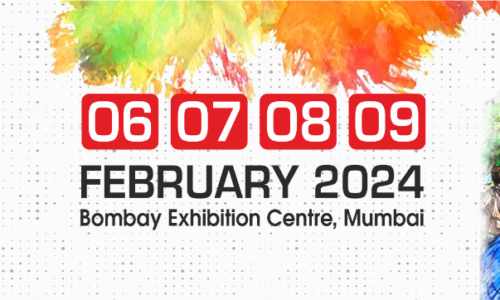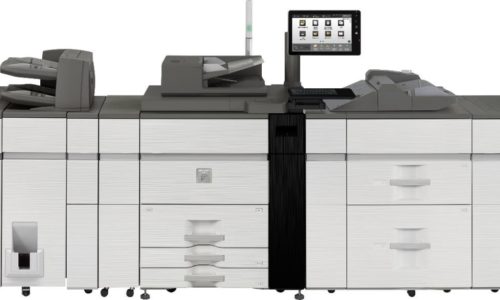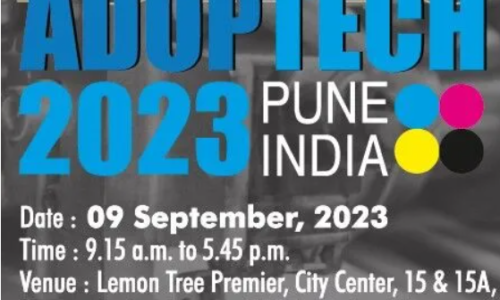Shombit Sengupta, Chairman & Founder, Shining Consulting is an international consultant to top management on differentiating business strategy with execution excellence. Since last 35 years, his core expertise has been in delivering extra benefit to clients across industries, to grow and sustain their business through the decisive repeat purchase of their product or service by their end-customers. He has created the ‘Emotional Surplus’ delivery model which is a blend of trust, functionality and emotive factors to provide end user touch point ecstasy in any delivery.

In a free-wheeling conversation, Sengupta, who will be a Lead Speaker at International Packaging Conclave 2013, talks about the Indian market in terms of packaging, design, consumer connect and behavior…
How do you think a brand can strengthen its connection with consumers?
The misconception that a brand can make consumer connect with its appearance is quite common when we talk of the Indian packaging industry. The key really is the product’s quality. Indian companies deal with a lot of challenges in terms of global competition in India. There is an emerging trend of frivolous consumers who want to try various brands so loyalty becomes a question mark for repeat purchase. Price advantage is not the only sign of getting consumer mindshare today. The brand proposition must have the price-quality-aspiration combined to score high in the competitive environment. Only when consumers experience quality ecstasy, irrespective of any category, does it make them return for more.
People do not buy packaging, they buy a product. Packaging is required to protect the product against industrial exhaustion during manufacturing, transportation, stackability on the retail shelf, presentation of the product and its benefit, and for establishing its character distinction from its competitive environment. Packaging is further required to provide user-friendliness to consumers, stackability at home, and how to trash it in an eco-friendly manner. But packaging alone cannot solve any marketing problem if the product is non-performing.
How different is the scenario in western countries?
In Western society, packaging and structural packaging are in a very advanced stage. Most product quality in the same category has reached a certain acceptable level. In the case of FMCG, private label at retails is giving the product at 25-30% lower than national brands. Private label uses very exciting packaging too. So for the manufacturer, the requirement of a sophisticated, user friendly packaging is a must.
Of course price is a big factor. Advancements in the packaging industry in the West have happened due to upliftment of the intrinsic quality of the product that consumers consume. So packaging has become a medium of distinction. The demand on packaging in every industry is very high. While bringing packaging sophistication, the West has also brought cost advantage in packaging material.
How would you comment on the Indian retail industry? Will FDI help in changing the mindset?
The organised retail revolution is yet to happen in India, the industry is at a nascent stage now. Indian retailers’ approach towards organized retail started off by using costly real estate in the heart of cities. But the organized retailer has to understand that if a consumer pays say Rs. 50 for toothpaste at a kirana store, he would not be willing to pay more only because it’s at a supermarket. The knowledge that simple kiranawalas in India have about their customers will likely be superior to the organized retail houses. That’s because kiranawalas have customer proximity through face-to-face interactions from operating in specific neighbourhoods, generation after generation.
In the multi-brand retail business, you do not manufacture a product. Retailers have to create an outstanding procurement system. They have to have the art of purchase from different manufacturers or trade intelligently with relevant selection in every category, always keeping the target shopper in mind to ensure the shopper’s benefit. They have to have the science of the catchment area and carry out related activities to create footfall. Their shopper-prompting planogram, retail ambience and visual merchandise lead to high conversion, which gives valuable returns per retail square foot.
Indian conglomerates with B2B business have tried to take this advantage of entering the retail business even though they had no experience of the retail industry. At the initial stage there was a hype of bringing expatriates from developed countries or other professionals from the Indian manufacturing industry of FMCG companies. Even a few expatriates from foreign retail industries cannot alone change any organization to enter the retail mindset and working culture.
After all, selling a product from a manufacturing company though a retail outlet, and driving a retail industry is not the same paradigm. In the West, most multi-brand retailers come armed with their practical experience as merchants with the knowledge of buying and selling. They do not come from established corporate houses. In fact they have now created their own style of corporate houses in the West, their expertise and proficiency is in retailing only.
FDI is very important for multinational retail companies to start their business in India. Only FDI can bring in process capability and the art of shopper handling. From there the Indian retail industry will learn a lot of things. Of course the main destination is that the shopper will get the best benefit. All protests against FDI are baseless, just political trauma. Proper multinational retail channels will help to uplift the capability and knowhow of how to run retails and achieve the Indian oragnised retail business.
How would you compare the Indian consumer behavior with the global consumers?
India is a unique country with an extremely heterogeneous society. There is diversity in terms of language, taste, culture, lifestyle, geography, religion and many more areas. Indian consumer behavior is in itself is a huge subject of study. Indian consumers cannot be compared to consumers in any other market.
I must appreciate the American fast food chains. They have really worked out to match with the heterogeneous Indian taste by creating some signature products. Indian consumers have started to realize and value quality that’s best. They are also willing to pay a higher price in the same category when it has better quality. But Indian consumers are giving higher weightage to international foreign brands. They consider international brands have more zeal and newness. In consumer research I have frequently heard that international brands are better because they have tested the products through trials. If and when they failed they have modified the product. This has resulted in extreme quality to satisfy multiple kinds of people from different countries. That’s why the knowhow of international companies is higher and their product quality is superior. Consumers exhibit more pride in using international brands rather than local Indian brands. Indian brands have the huge task of uplifting their quality in the global competitive environment.
How important is it to strengthen the Rational and Functional factors of the product or service, in addition to the Emotive factor, to result in Emotional Surplus?
A Rational factor of a product is one that the buyer cannot see. That is the intrinsic quality of the product. It’s the discretion of the manufacturer as to the degree of quality perfection that’s provided in the product. The Rational factor generates consumer trust and belief in the product so it’s the ultimate buy-in factor.
The product’s Functional attribute is its usage advantage. You need to study the impact and usage of a product relevant to different categories. Different categories have different types of attributes to score in the Functional factor. Without the product’s Functional upliftment, distinction cannot be brought into its value proposition in this competitive environment.
The Functional advantage has to be locked with the quality of raw material and knowhow of the company to deliver sustaining value of the product.
The Emotive factor comes from the embellishing aspect in the product itself. This includes its overall package, retail shelf visual merchandising distinction and BTL (below the line) activities.
High balance of the Rational, Functional and Emotive factors achieve excellence that’s better than competitors. It then results in Emotional Surplus. This means creating surplus value of the proposition so that buyer gets to experience a high that captures elusiveness; and the manufacturer can get growth with a solid bottomline.
Sustainability has been taken up as an important concern of the Indian Packaging Industry. Your comments!
The subject of sustainability is very important for a country like India, where garbage happens to have high acceptance in society. In front of corporate houses or 5 star hotels or exclusive housing layout you can see piles of garbage day after day. Nobody seems to care enough to resolve this big problem. We used to have garbage comprising of packaging material from Indian products, now we have international products packaging material garbage! It is the social responsibility of all companies to take necessary steps towards sustainability.
Packaging innovation acquires huge importance in being able to align to this country so that the unhygienic system we currently experience should not grow. As there is no initiative from the government India’s packaging industry should ideally create Alladin’s lamp with the genie who makes everything appear. After consuming the product, the packaging should disappear! In today’s parlance, that means bio-degradable material.
What would be your focus at the International Packaging Conclave 2013?
I don’t know! Why should I disclose it before? Perhaps the Indian packaging industry should benchmark with Alladin’s lamp and the genie. That could translate to being better than being bio-degradable. This is the need of the hour.
Where do you find India in terms of packaging and design innovations? How well is it competing with the international market?
India, being a price sensitive market, cannot afford to have innovations that demand an increase in the costing of a packaging. The challenge is to align innovation with price, quality and aspiration of the product. My experience has been that the people working in the packaging industry here are more into technical perfection rather than into marketing that brings benefit to their clients. They need to concentrate on how they can both grow fast as well as create big volume that can bring down the packaging cost. Packaging innovation requires a lot of background study and research.
If I compare the Indian and global markets, I would know that the requirements are different. For example, in the West, most families are nuclear. In India, the joint family has broken into 8 different types of family living conditions especially in the urban areas. So the same product needs different sizes of packaging according to different family sizes. But upfront, I don’t see this packaging explosion in the market.
What kind of challenges have you faced in dealing with brands like Britannia, Parachute, Wipro, Marico etc?
I have never worked in a zone of comfort. For creating disruption and execution excellence you require both the teams, the one from my company Shining as well as the client corporation’s team, to be in the same page for an extracting a result. I’m grateful that most of the companies have accepted our logical disruption and execution excellence to bring out their value proposition as perceived by their buyers.
Where do you think we the Indian consumers need to improve ourselves?
Don’t ever ask consumers to change. Industry and marketers have to bring outstanding innovation and competitive products with affordable price to woo consumers by offering them sustaining quality in products and services.
No company should sit on its past glory. Consumers can shift at anytime in India, from one brand to the other or one category to another. This question can only be asked to the professionals and the industry on how to improve by adopting a disruptive platform and execution excellence. They have to deliver value of life upliftment to consumers.
Anything else you would like to add on…
Disruption and execution excellence to create ecstasy in all customer touch points is the work of a brand that is executed through its product and its packaging.



